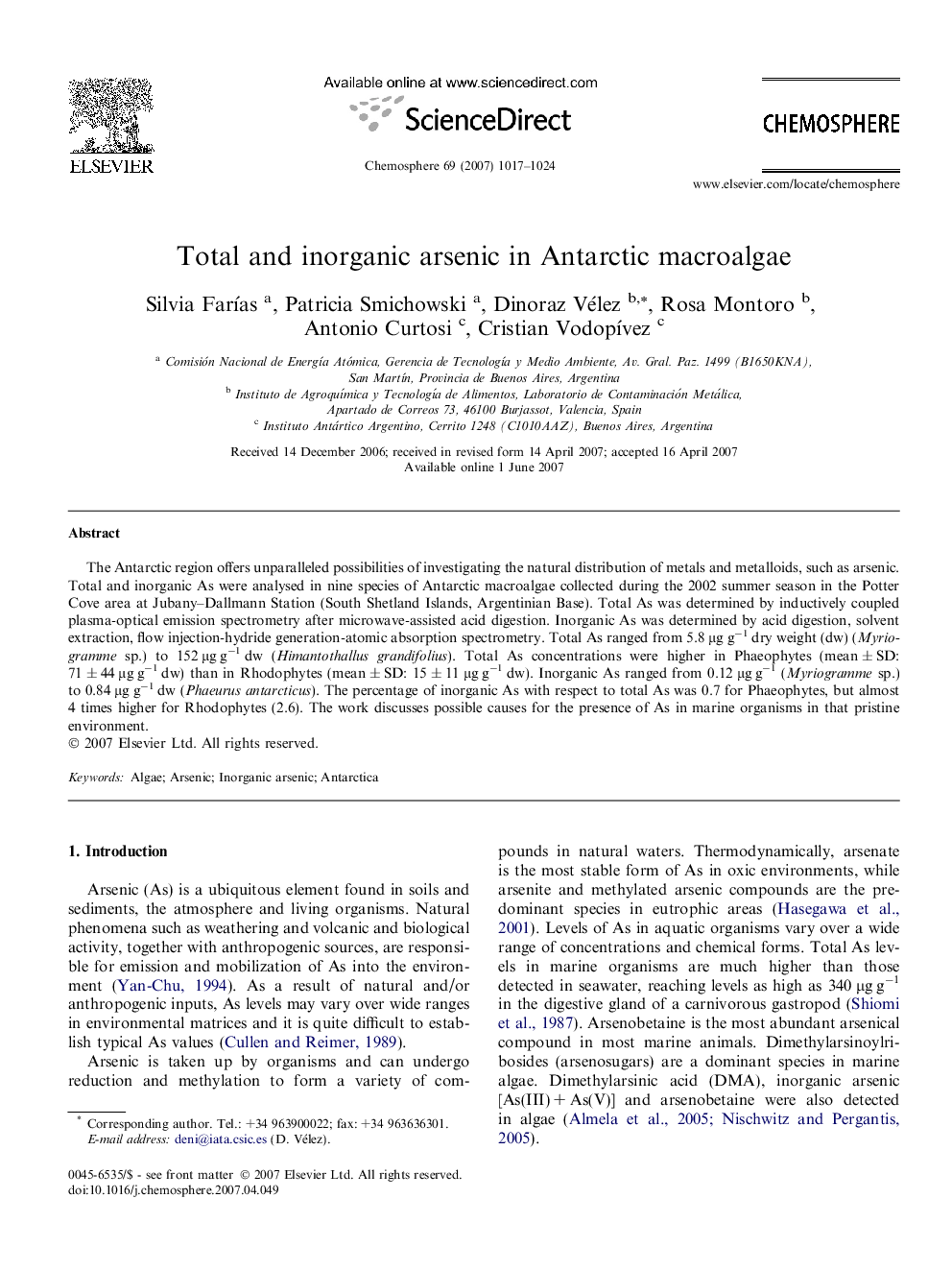| Article ID | Journal | Published Year | Pages | File Type |
|---|---|---|---|---|
| 4414895 | Chemosphere | 2007 | 8 Pages |
The Antarctic region offers unparalleled possibilities of investigating the natural distribution of metals and metalloids, such as arsenic. Total and inorganic As were analysed in nine species of Antarctic macroalgae collected during the 2002 summer season in the Potter Cove area at Jubany–Dallmann Station (South Shetland Islands, Argentinian Base). Total As was determined by inductively coupled plasma-optical emission spectrometry after microwave-assisted acid digestion. Inorganic As was determined by acid digestion, solvent extraction, flow injection-hydride generation-atomic absorption spectrometry. Total As ranged from 5.8 μg g−1 dry weight (dw) (Myriogramme sp.) to 152 μg g−1 dw (Himantothallus grandifolius). Total As concentrations were higher in Phaeophytes (mean ± SD: 71 ± 44 μg g−1 dw) than in Rhodophytes (mean ± SD: 15 ± 11 μg g−1 dw). Inorganic As ranged from 0.12 μg g−1 (Myriogramme sp.) to 0.84 μg g−1 dw (Phaeurus antarcticus). The percentage of inorganic As with respect to total As was 0.7 for Phaeophytes, but almost 4 times higher for Rhodophytes (2.6). The work discusses possible causes for the presence of As in marine organisms in that pristine environment.
